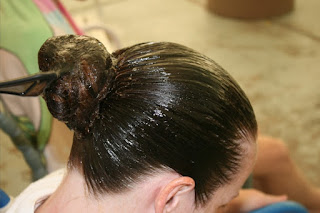Most of us attempted to play handball about a year and a half ago. We didn't feel as if we really got a chance to learn and play it, so we kept looking and eventually found Dallas Team Handball. We stopped by to take part in one of their practices and get some first-hand knowledge of the game.
Handball is played on five continents by over
180 countries and 19 million people all ages, worldwide, but is most popular in
European and Asian countries. First introduced as an outdoor sport during the
1939 Summer Olympics program, handball has since been an indoor sport in the
Summer Olympics program since 1972. USA men have competed 6 times, most
recently in 1996. USA women have competed 4 times, also most recently in
1996. Neither team qualified for Rio 2016.
It's a fast paced game with emphasis on
passing and scoring. There are elements of soccer, water polo, hockey and
basketball. Play involves 7 players per side, including goalies. It
is more physical than basketball, as contact is allowed, but no tackling.
There are 2 minute penalties and yellow/red cards. Each player can only
hold the ball for maximum of 3 seconds and must pass or dribble after 3
steps. Typical scoring lines include around 50 points per game.
Shots on goal can go up to ~70mph.
“The
Most Exciting Sport You’ve Probably Never Seen” according to Team USA
website. 31 women are on the current roster – 20% are from foreign
countries.
We first started by warming up our arms/shoulders with some passing. Then we did a few different drills - inside a relatively small square (roughly 1/3 the size of a basketball court), we divided into two teams and essentially played "keep away", passing to our teammates using "handball rules" of 3 steps or 3 seconds between passes, while the other team tried to steal it. Then we had to do a jump pass each time, then we had to do one dribble between passes. That got us ready for a long scrimmage.
It was perfect - there were four of us and 10 DTH members, so just enough to play a proper 7 on 7 game.
 |
| L2 looking to pass while L1 guards |
The game can be incredibly fast paced - though the coach of the team kept reminding some players to slow down. The overall objective on offense is to pass quickly and efficiently until the defense makes a mistake and opens up a gap in which to shoot the ball. There is also a "pivot" position that plays mostly with her back to the goal she's trying to score on - so she can pass or quickly turn and shoot.
 |
| R takes a shot on goal |
Between watching the ball and the opponent, I found it very difficult to have time to keep an eye on my feet to make sure I wasn't crossing into the "circle" that is only for the goalie. There is so much your brain has to keep track of even when you don't have the ball!
Finally, we closed practice taking penalty shots - a fun way to get an under control, no defenders shot at the goalkeeper.
 |
| J takes a penalty shot |
We had a great time playing team handball. We're looking forward to watching in person in Rio!
 |
| Handball complete! |















































